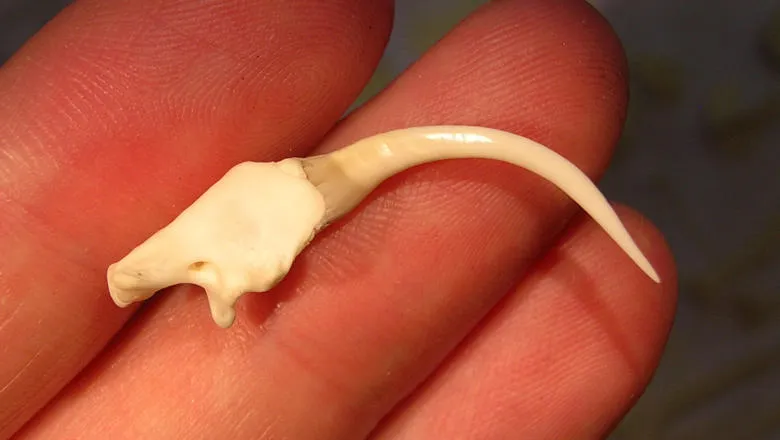King's College London biologists shed new light on the evolution of an iconic feature of some modern snakes.

Venom fangs evolved separately in several species of modern snakes, according to a new study from an international collaboration of academics from King's College London, the University of Alberta, Canada, Flinders University in Adelaide, Australia, and Monash University in Melbourne, Australia.
This research provides a textbook example of convergent evolution, in which two or more lineages with a common ancestor tweak that ancestral body plan in similar ways independently to adapt to a similar challenge. They end up with vipers and cobras, two snake lineages separated by about 40 million years, that both evolve large fangs at the front of their mouth.
Considered one of the most successful groups of vertebrates, snakes are a source of great interest for the scientific community—in particular, the factors that contribute to their evolutionary success.
The venomous teeth of modern snakes share several common characteristics, including a venom-delivering tube or groove made up of a type of tissue called plicidentine. Plicidentine is widespread among snakes and is key to understanding how snakes could repeatedly evolve their fangs.
"A snake's venom fang is an iconic example because it's a tooth that's been modified into a venom-injecting syringe," said co-author Aaron LeBlanc, Marie Curie Postdoctoral fellow at King's College London.
"Our closer look into the development and evolution of snake teeth tells us how this might have happened through gradual, piecemeal changes," LeBlanc said.
"It reveals how mutations and subtle changes in tooth shape and size can slowly modify a tooth from a grasping and puncturing structure into a new tooth type that injects venom."
Aaron LeBlanc and co-author Alessandro Palci undertook the research while they worked with Professor Michael Caldwell in the University of Alberta's Department of Biological Sciences.
"Alessandro and Aaron recognized that the evolutionary novelty of venom fangs—the tubes or grooves to deliver venom—evolved numerous times within different lineages of snakes," said Professor Caldwell. "This novel venom groove or tube is nothing more than an elongated dentine wrinkle, a plicidentinous fold, that closes up on itself—that amazes me."
This research was conducted in collaboration with research teams at the University of Alberta, Canada, Flinders University in Adelaide, Australia, and Monash University in Melbourne, Australia. Funding was provided by the Australian Research Council and the Natural Sciences and Engineering Research Council of Canada.
The paper, "Plicidentine and the repeated origins of snake venom fangs," is published in Proceedings of the Royal Society B.






